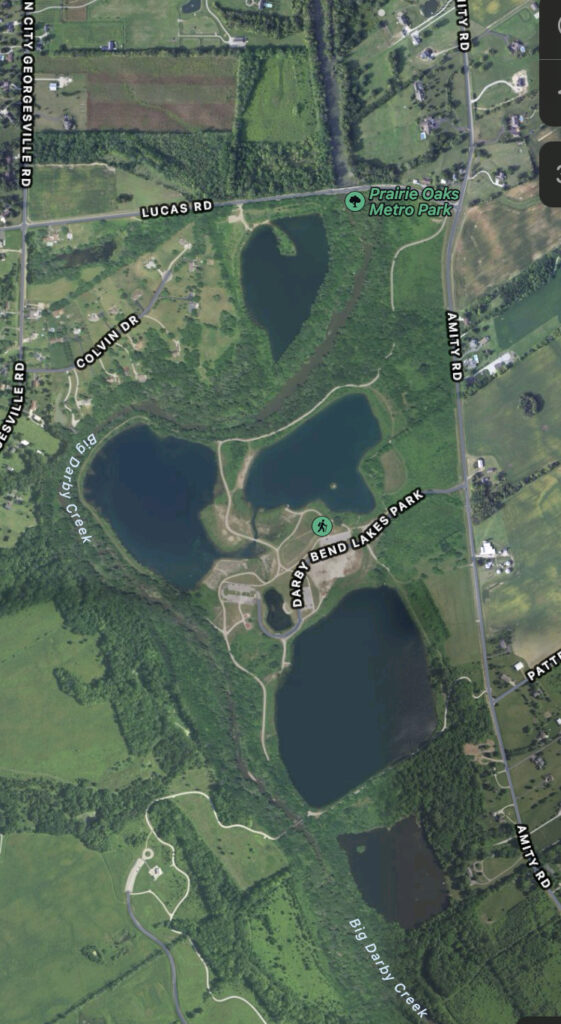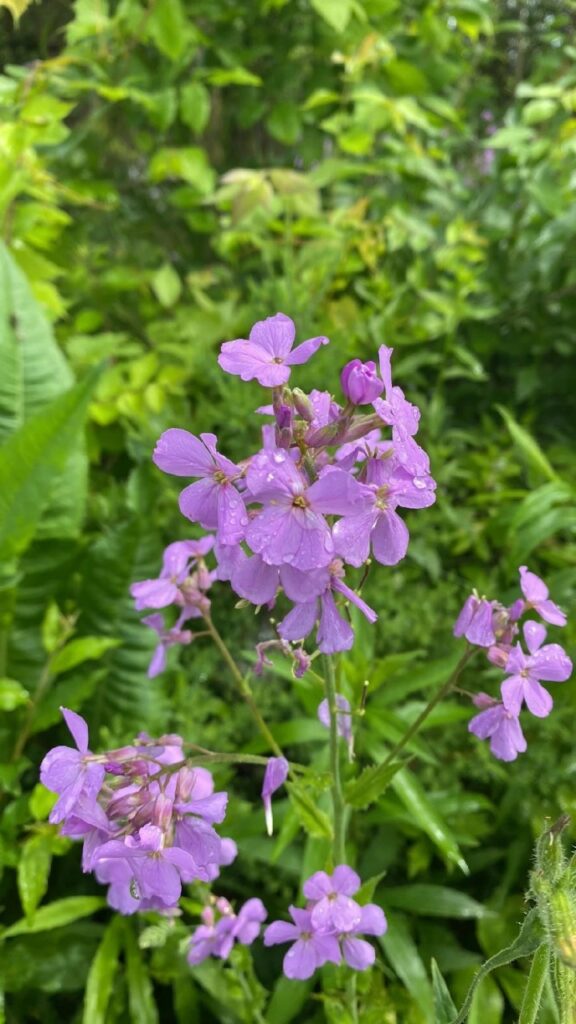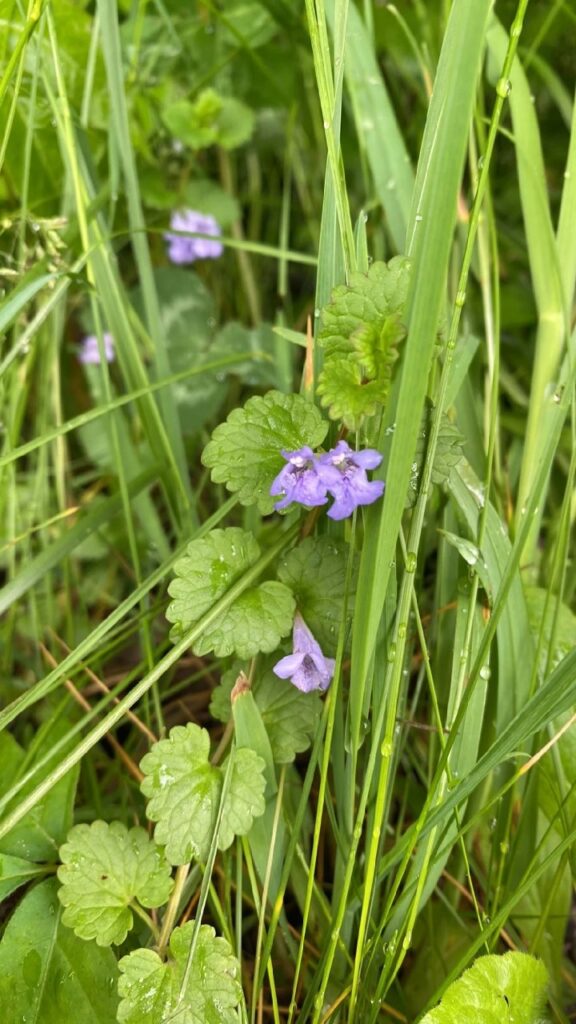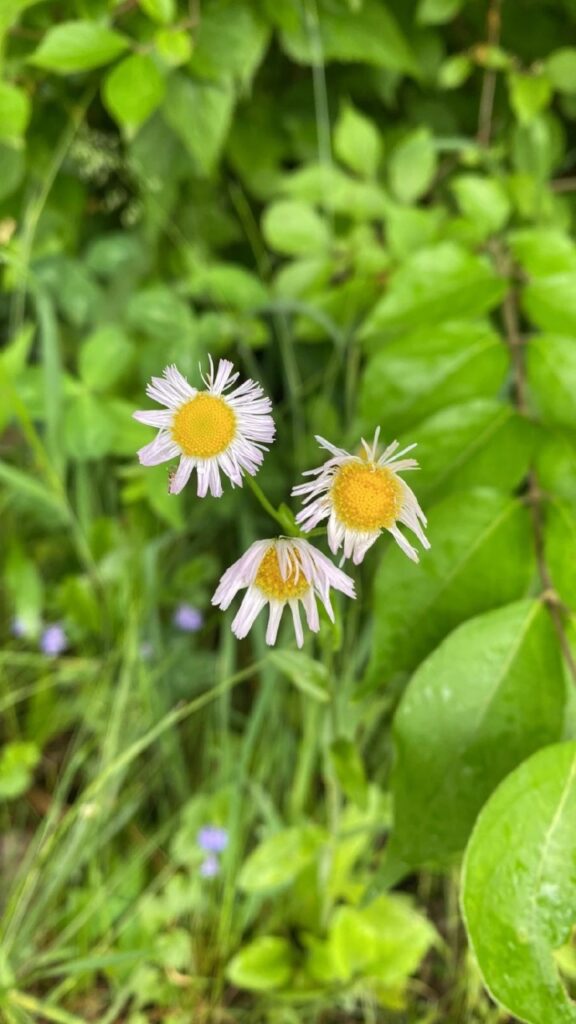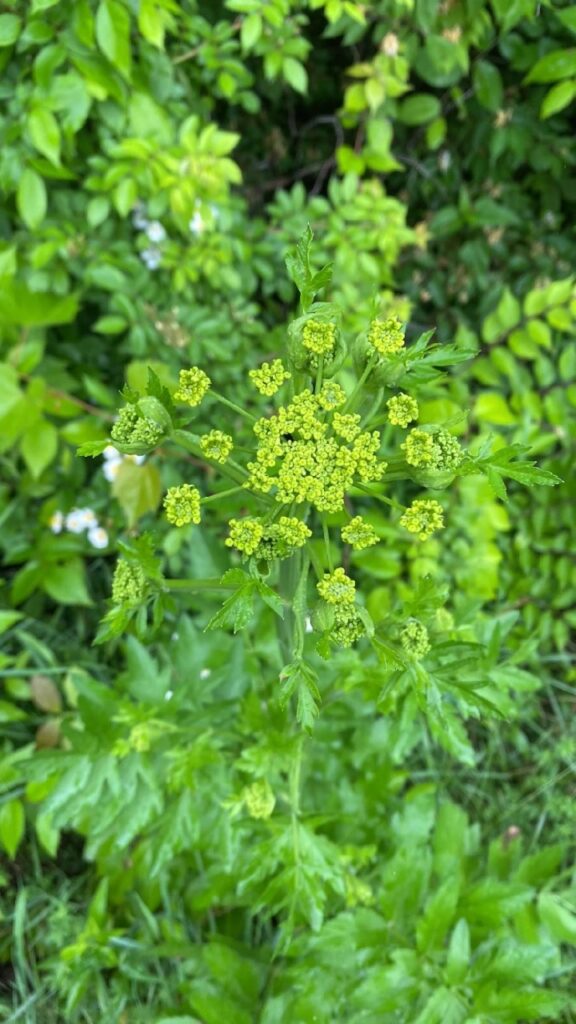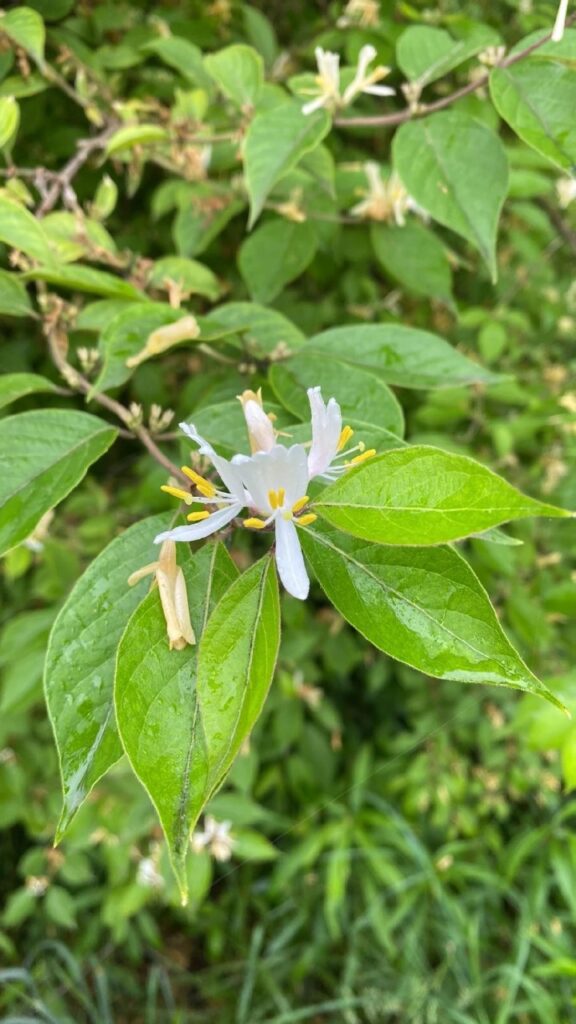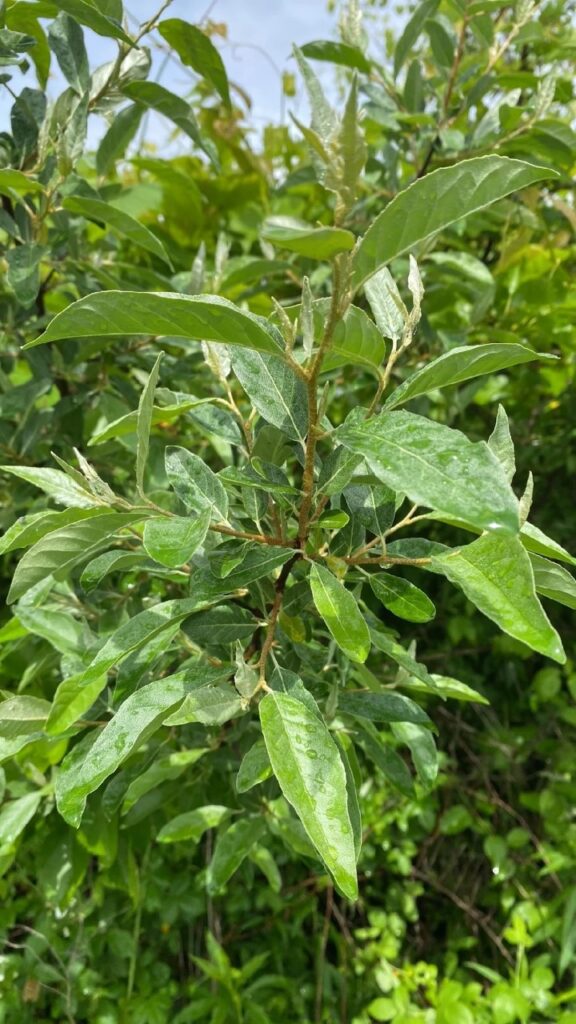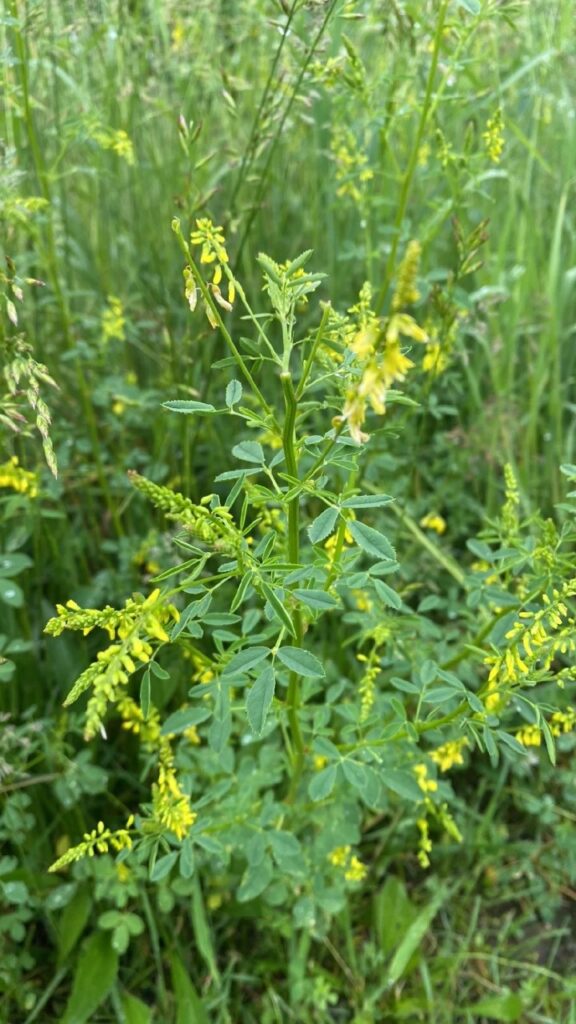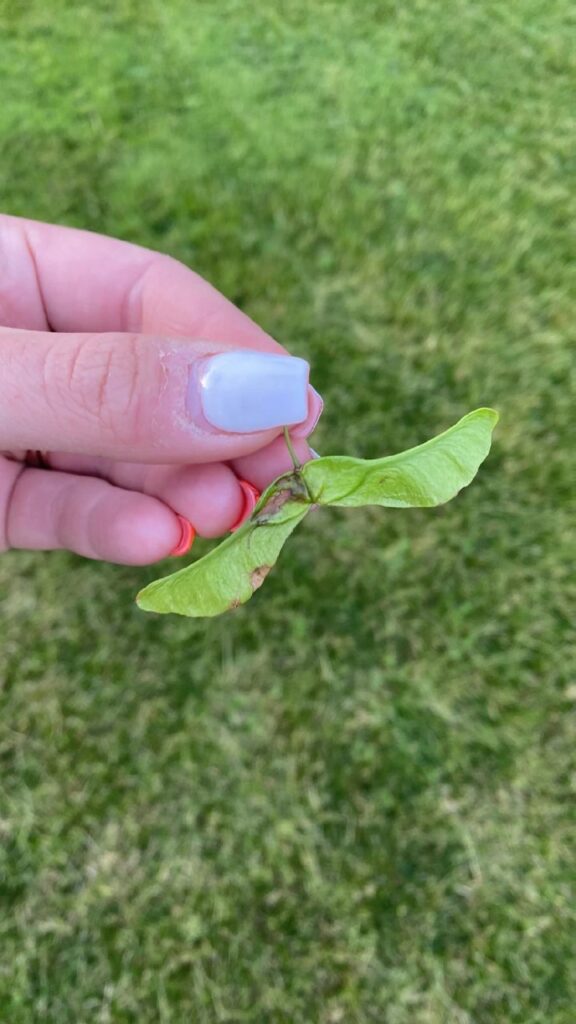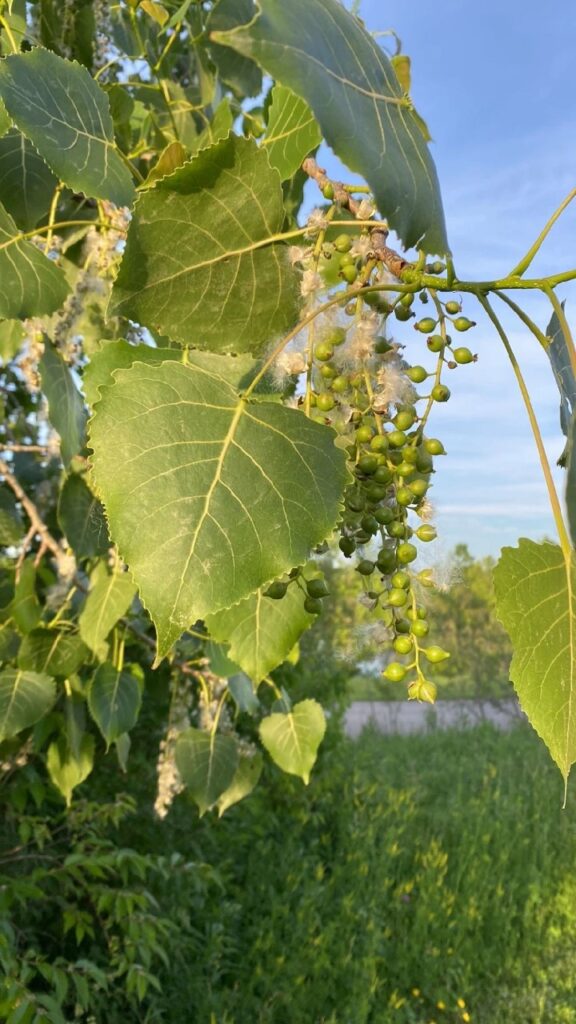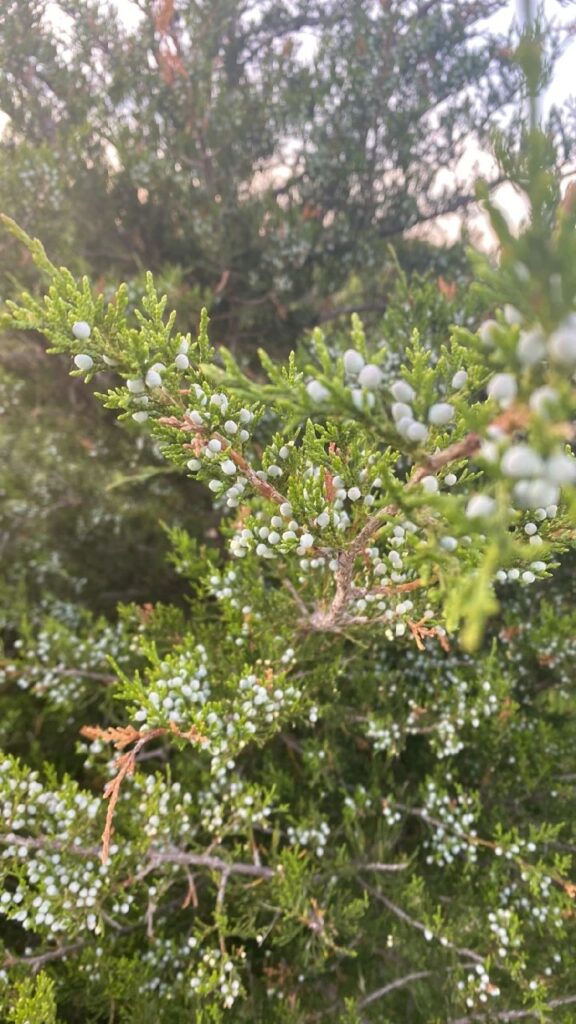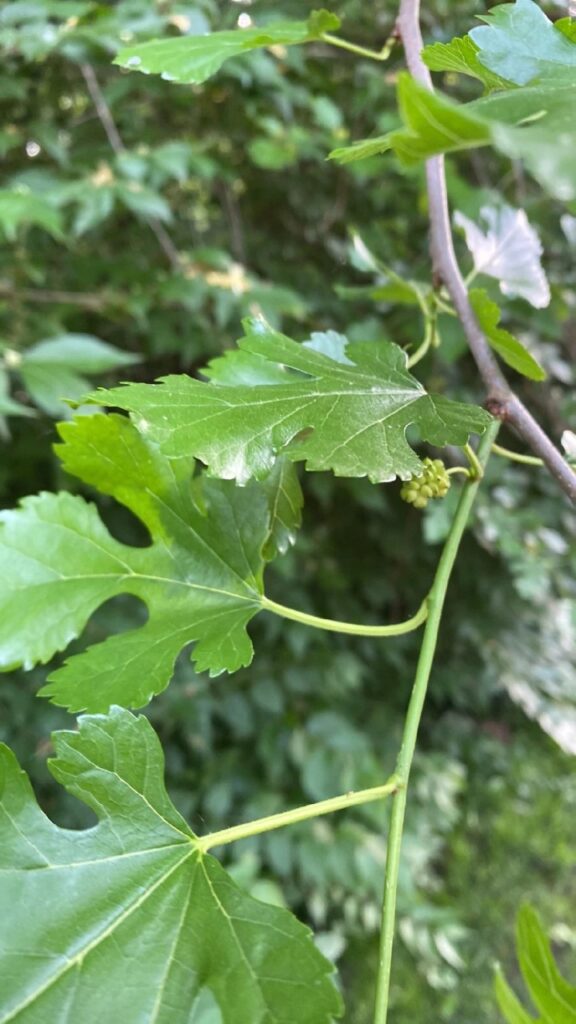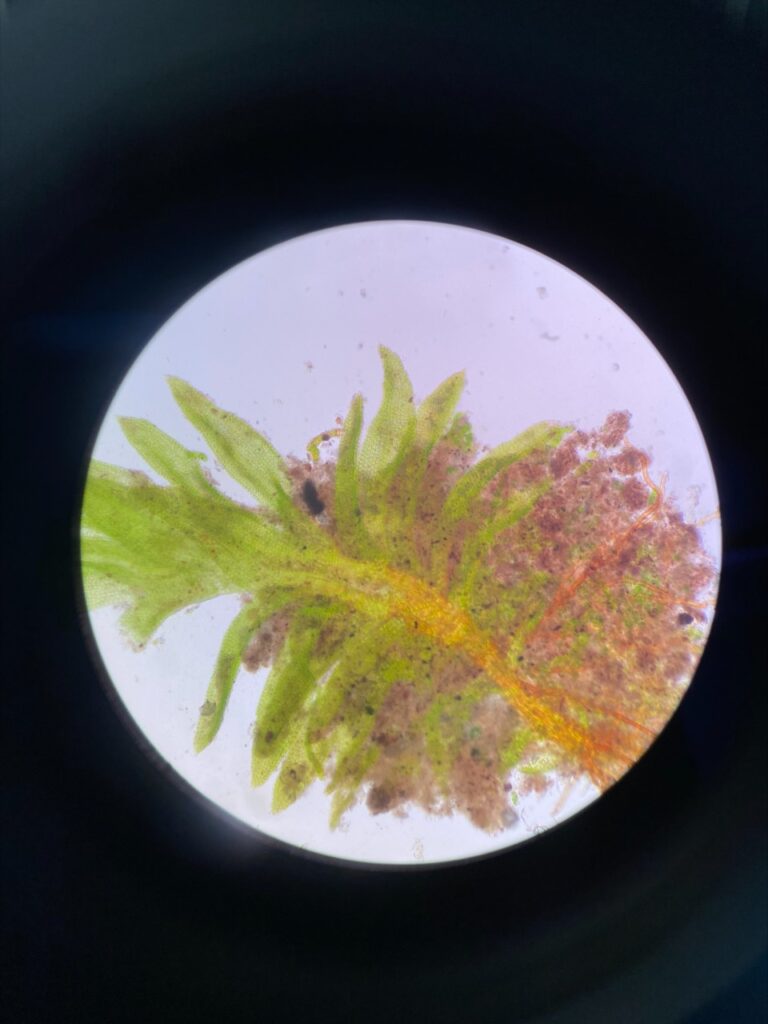The Plants of Prairie Oaks
(Prairie Oaks, located in Madison and Franklin county)
Prairie oaks. Ever heard of it? Well, let me tell you a little bit about prairie oaks. Aside from this being a beautiful park, you can participate in a number of activities here. These range from cannoning to horseback riding to even going to a dog day, who wouldn’t love to go to that! Let’s look at the numbers and technical aspects of this park. Prairie oaks features around 500 acres of lush flowering prairies and grasslands that have been restored using native seeds of the Darby Plains. At prairie oaks you can see the Big Darby Creek, a scenic river that flows through the 2,204 acre park. This park also has very deep lakes that people enjoy fishing and boating in. The trails of prairie oaks range from 0.5 miles to almost 7 miles! If you need a new place to walk come here! While walking around at this park you will see a variety of different plant life and a variety of wildlife. Let me show you a visual so you have a clearer idea of the location as well!
Oh, by the way watch out for poison ivy (Toxicodendron radicans)…. let me show and explain to you what it looks like just in case!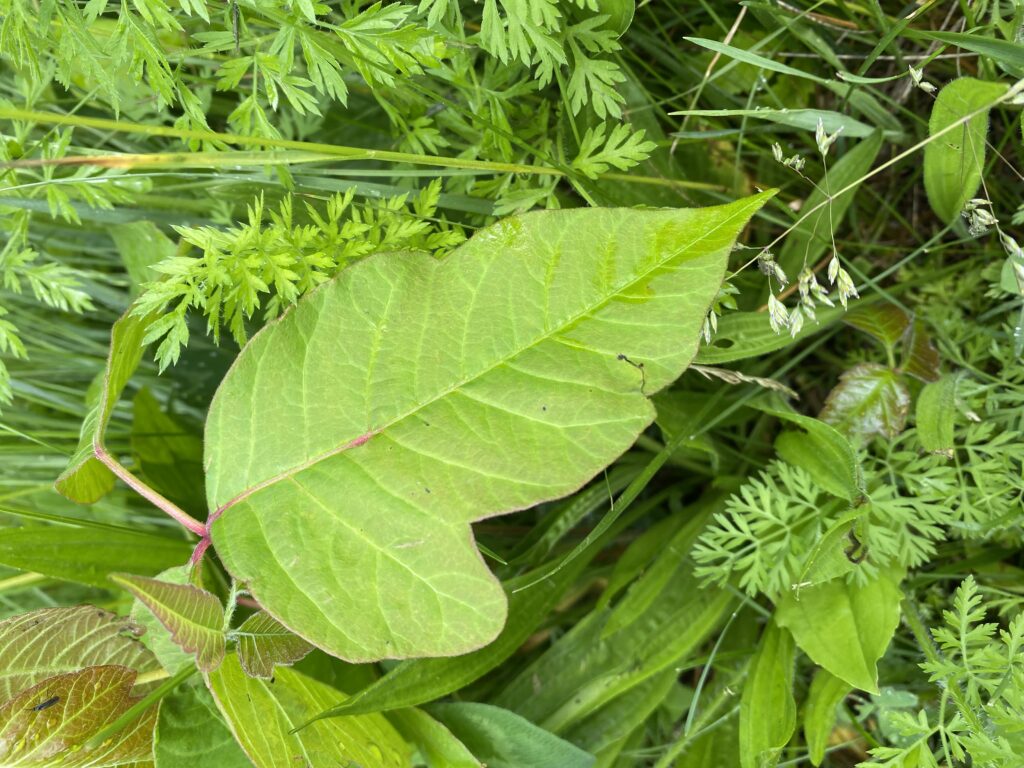
The main rule is leaves of 3 let it be. Poison ivy has leaves that are trifoliate and it’s vine looks like a hairy rope. It’s roots like to bind to trees and sometimes you will see white drupes. Virginia creeper is also similar to poison ivy watch out! It has frog like suction cup roots that hook onto trees.
Now that you know where prairie oaks is and what to look out for let’s move on to flowers and inflorescences!
Flowers and Inflorescences of Prairie Oaks:
Part of our botanical survey was to explore and use our knowledge of plants to determine a few key facts about them. The flowers that I have decided to show you include dame’s rocket, ground ivy, Philadelphia fleabane, and lastly the flowers of wild parsnip.
Dame’s Rocket
Hesperis matronalis
Dame’s Rocket is apart of the Brassicaceae family also known as the mustard family. This being said we already have a foundation of the basic knowledge of this plant family. The leaves of this flower are simple, alternate and there is one leaf per node along the stem. The flower is radially symmetrical (actinomorphic), both the sepals and petals are separate, there are four petals, 4 sepals, it has 6 stamens (4 long, 2 short), the gynoecium is syncarpous, and it is hypogynous. I found this plant near the big darby creek and near the edges of the woodland. It has a branched raceme inflorescence and a beautiful purple hue to it. The fruit produced is known as a silique that is generally papery along partitions.
Ground Ivy
Glechoma hederacea
Up next we have ground ivy which is part of the lamiaceae family also known as the mint family. Ground ivy has a square stem with opposite leaves. It is bilaterally symmetrical (zygomorphic), and has fused petals and fused sepals which form a cup shape. It has 2 or 4 stamens and there are 5 petals and 5 sepals. It has a superior ovary and is hypogynous and it’s gynoecium type is syncarpous. This plant was found on the edges of the woods that most likely came from their main home the prairie. The inflorescence type of ground icy is referred to as cyme. Ground ivy produces a fruit called a nutlet. A nutlet is a small nut!
Philadelphia fleabane
Erigeron philadelphicus
The Philadelphia fleabane is apart of the asteraceae family. The leaves of this plant are simple and alternate. The flowers are actinomorphic as you can note in the picture provided and the sepals are relatively absent. The head of the flower is composed of tiny flowers inserted on a common receptacle so really this “flower” has multiple flowers! Because it has so many flowers it is not fused. The flowers are epigynous and the gynoecium type is syncarpous. This plant was found in the wetlands and prairie! The inflorescence of this plant is a capitulum. This plant fruits an achene and this means the seed is attached by the pericarp only at the base.
Wild Parsnip
Pastinaca sativa
Lastly, we have the wild parsnip. Parsnip is apart of the apiaceae family also known as the parsley family. The flower of this plant is radially symmetrical and both the petals and sepals of this flower are fused. There are 5 petals and 5 sepals on this flower as well. These flowers are epigynous and it’s gynoecium type is syncarpous. I found this plant in the prairie are of prairie oaks and it has an umbel inflorescence type. Wild parsnip produces a fruit called a schizocarp that splits into two 1 seeded segments.
Invasive Plants of Prairie Oaks:
When using the Ohio Invasive Plants Council page to identify some invasive plants I was able to very quickly identify a few of these plants from my site. Some of these include the amur honeysuckle, the autumn-olive, multiflora rosa, and the yellow sweet-clover. Next time you’re outside I bet you will see the invasive honeysuckle!
Amur Honeysuckle
Lonicera maackii
The Amur honeysuckle is native to eastern Asia. It made its way over to the United States when it was imported from New York in 1898. It originally was planted for wildlife cover and spike erosion, but has gotten out of hand and is reproducing on its own. Amur honeysuckle impeded reforestation of cut or disturbed areas and prevents reestablishment of native plants. It tends to be a very shady plant and makes it hard for other plants to grow, however robins tend to like this plant to nest in. Control measures include pulling young plants by hand and using systemic herbicides containing glyphosate. (https://www.invasive.org/alien/pubs/midatlantic/loma.htm
Autumn-Olive
Elaeagnus umbellata
The Autumn-olive is native to China and Japan. It was introduced to North America in 1830 originally intended to be an ornamental, but has escaped into the wild. This plant tends to invade recently cut or burnt sections of land. It invaded native ecosystems before they have a chance to reproduce themselves. Control measures are being taken that include manual removal of seedlings. Any remaining exploded roots should be cut and mechanical equipment can be used to remove adult plants. Herbicides may also be used to aid in control and unfortunately no biological controls have been found yet.(https://www.oipc.info/uploads/5/8/6/5/58652481/7factsheetautumn-oliverussian-olive.pdf)
Multiflora Rosa
Rosa multiflora
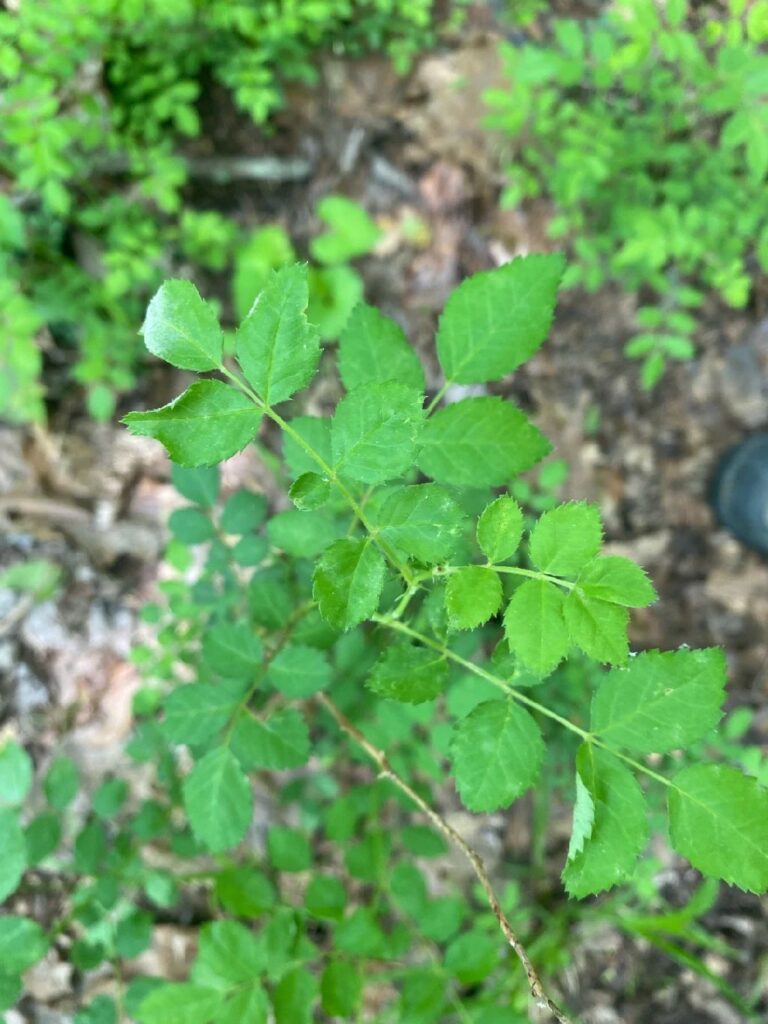
The Multiflora Rosa was introduced from Japan, Korea, and eastern China in 1866 as a rootstock for ornamental roses. It was promoted as a living fence type of plant, but since the
n has made its was into a variety of ecosystems. The seeds of the multiflora rosa are dispersed by birds and the seeds remain viable for up to twenty years. A variety ecosystems are affected by the millions of seeds produced by longs a year. Generally pulling or removing individual plants is effective and prescribed burning can also be effective. Herbicides can be used to control this plant as well. A virus called Rose rosette has killed plants within 2-5 years of infection and a seed infesting wasp is also another potential biocontrol.(https://www.oipc.info/uploads/5/8/6/5/58652481/8factsheetmultiflorarose.pdf)
Yellow Sweet-Clover
Melilotus officinalis
Unfortunately the yellow “sweet”- clover isn’t all that sweet of a plant as it is invasive. These clovers are native to the Mediterranean region, central Europe and Asia. Originally the yellow sweet-clover was brought to the US for use as forage and honey protection, but have gotten out of hand. The plants produce 350,000 seeds per plant and invade a variety of ecosystems as they’re viable for up to 30 years. They’re also drought resistant making them hard to get rid of. First year should be pulled, but second year plants should be pulled as the stems are fragile. Chemicals can be used such as Roundup and little research has been done in terms of biological control methods. (https://www.oipc.info/uploads/5/8/6/5/58652481/16factsheetwhiteyellowsweetclovers.pdf)
Woody Plant Fruit Identification:
Now, for the fruit identification portion of my webpage. I don’t want to give out the answers of what these fruits belong to right away so here we will look at a fruit and from there learn how to identify it and what species it belongs to.
Samara
Here we have a samara. What is a samara? A samara is like an achene, but it has wings. Ok, backtrack… what’s an achene? An achene is a seed attached to surrounding pericarp only at the base. Both of these fruits are one-seeded dry fruits that do not split at maturity. If you see something that looks like it has wings and when you throw it up in the air and it descends like a helicopter you have found a….Norway Maple (Acer platanoides)! The fruit as you can see if also U shaped.
Up next you’re looking at a capsule. A capsule consists of 2 or more capsules, that split into a variety of ways. This is a fruit that has serval seeds and splits at maturity. The seeds of this tree are hairy and provide a cottony mass. So if you see some cotton flying around you’re most likely near an….Eastern Cottonwood (Populus deltoides)!
Berry
Confusingly enough a lot of the things that we call berries aren’t actually berries. A berry is fleshy throughout, and has many seeds. A grocery store example is a tomato. This berry is blue in color and as mentioned before fleshy. This is a gymnosperm so this isn’t technically even a fruit rather a reproductive structure that eventually turns into a cone! This type of tree is an….Eastern Red Cedar (Juniperus Virginiana)!
Multiple fruit. What is that… no worries I will let you know no guessing here! A multiple fruit is derived from several to many individual flowers in a single fluorescence. A mulberry fits this description perfectly. The fruits of this tree are almost like a blackberry in shape, but slightly longer. They’re white and sometimes a little pinkish. If you see a fruit that looks like a very small pineapple and not the right color of a pineapple you’re in luck you’ve found a…White Mulberry (Morus alba)!
Mosses and Lichens of Prairie Oaks:
Orthotrichum: Here we have a moss called orthotrichum. In order to correctly identify this moss I had to prepare a wet mount in class and this is what I saw. When zoomed in very closely we can see the leaves are papillose (bumpy), and this moss is an acrocarp. An acrocarp has a single costa, and looks like carpet. It does not branch.
Lichen 1 & 2
 Left: Orange Cord Shadow Lichen (Phaeophyscia rubropulchra) : This is a small lichen that likes to grow on tree bark and rocks in light to deep shade. It is a foliose lichen meaning it is flat and leaflike.
Left: Orange Cord Shadow Lichen (Phaeophyscia rubropulchra) : This is a small lichen that likes to grow on tree bark and rocks in light to deep shade. It is a foliose lichen meaning it is flat and leaflike.
Right: Smooth Axil Bristle Lichen (Myelochroa galbina): Now on the right we have a foliose lichen similar to the one above. This lichen is medium sized likes to grow on a variety of tree species.
Lichen 3 & 4
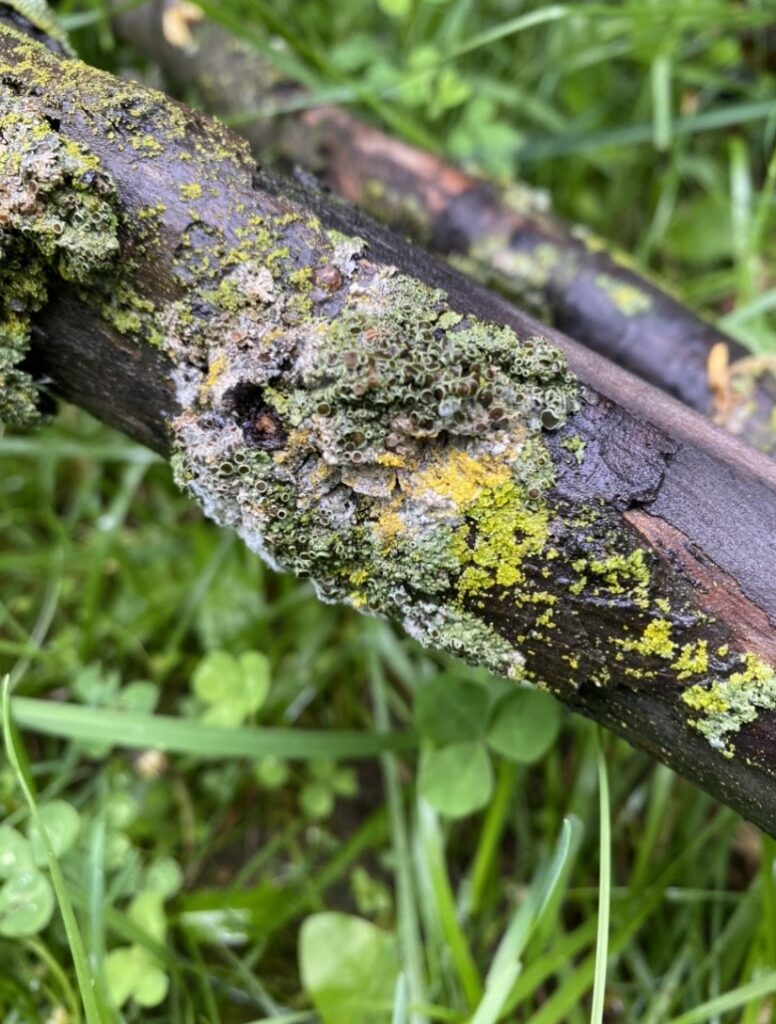 Top group: Star Rosette Lichen (Physcia stellaris) : On the top of this twig we see a lichen that is small and also apart of the foliose lichen group. It likes to grow on trees in full sun to light shade.
Top group: Star Rosette Lichen (Physcia stellaris) : On the top of this twig we see a lichen that is small and also apart of the foliose lichen group. It likes to grow on trees in full sun to light shade.
Right group: Lemon Lichen (Candelaria concolor): On the southeastern part of this twig we have a yellow and green lichen that are actually the same lichen. Lemon lichen are small, and no bigger than a fingernail. These lichen are also apart of the foliose group and they grow on bark in full sun.

